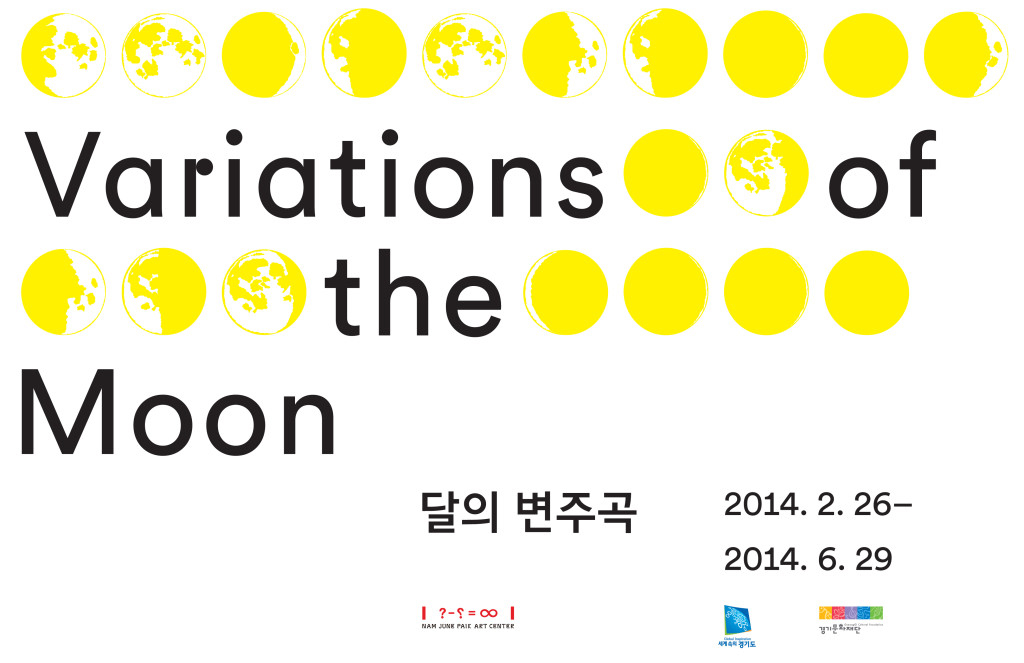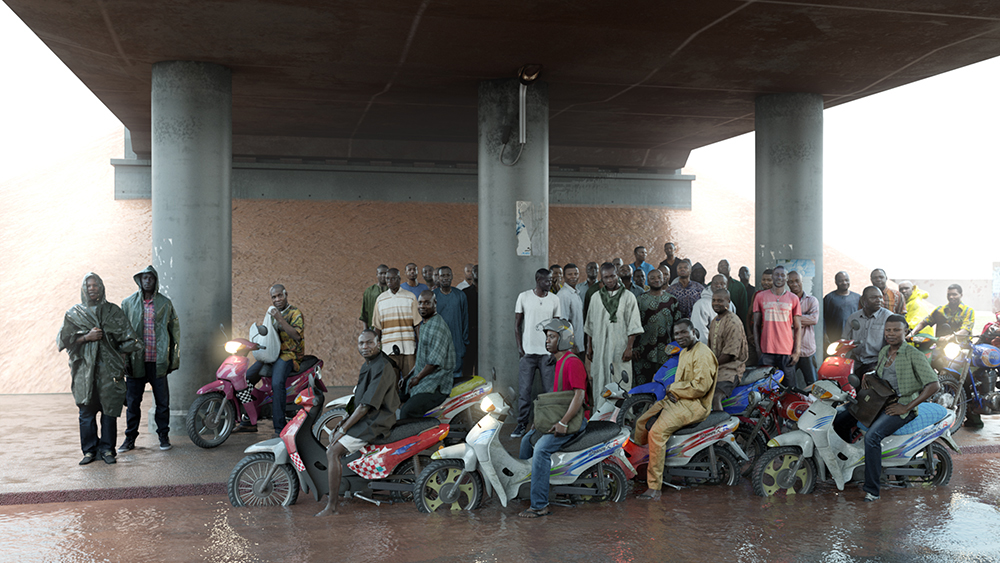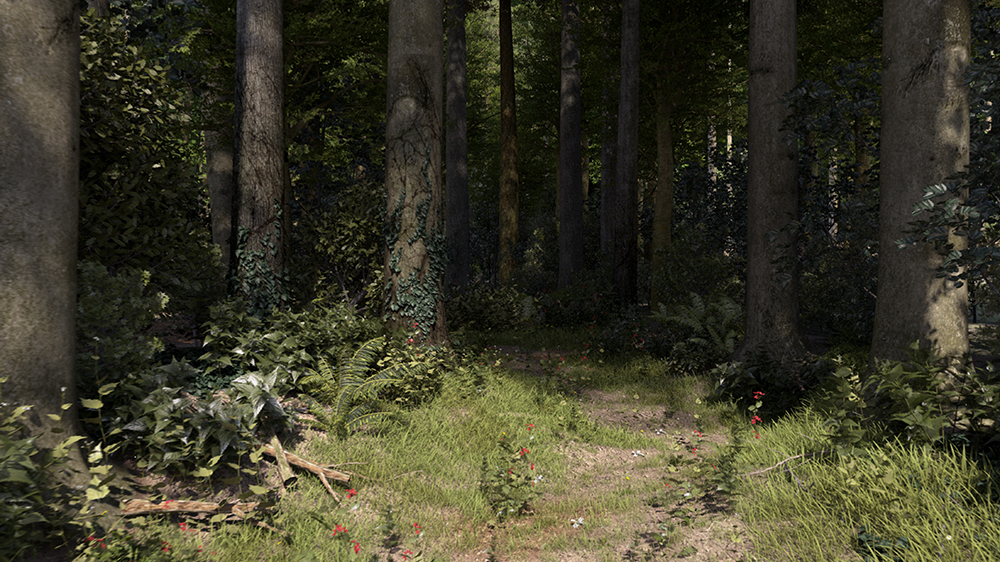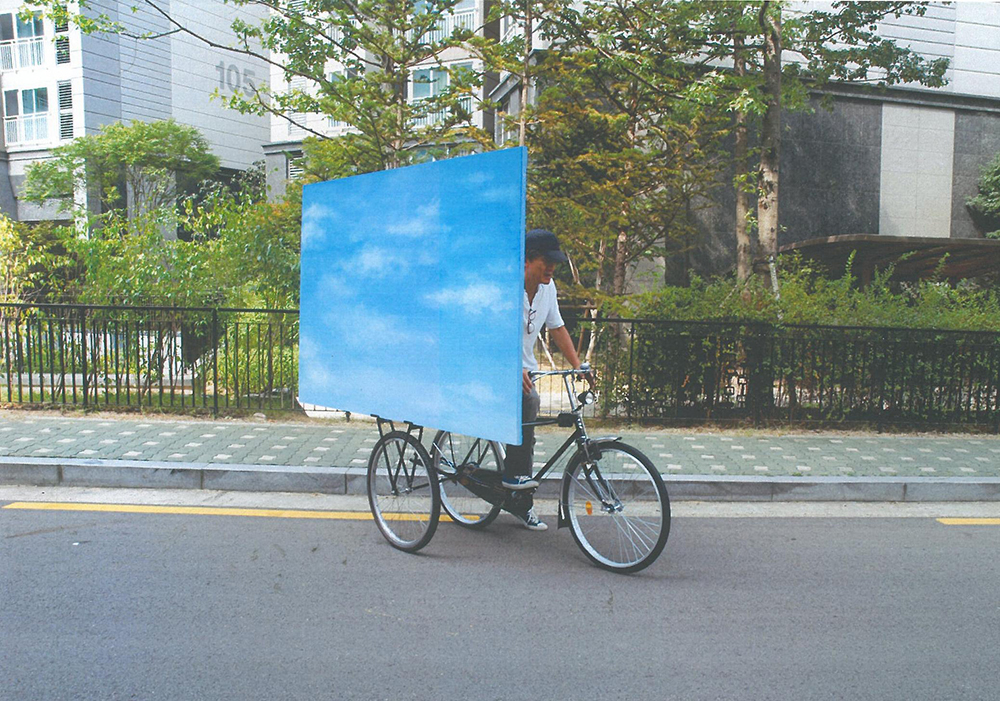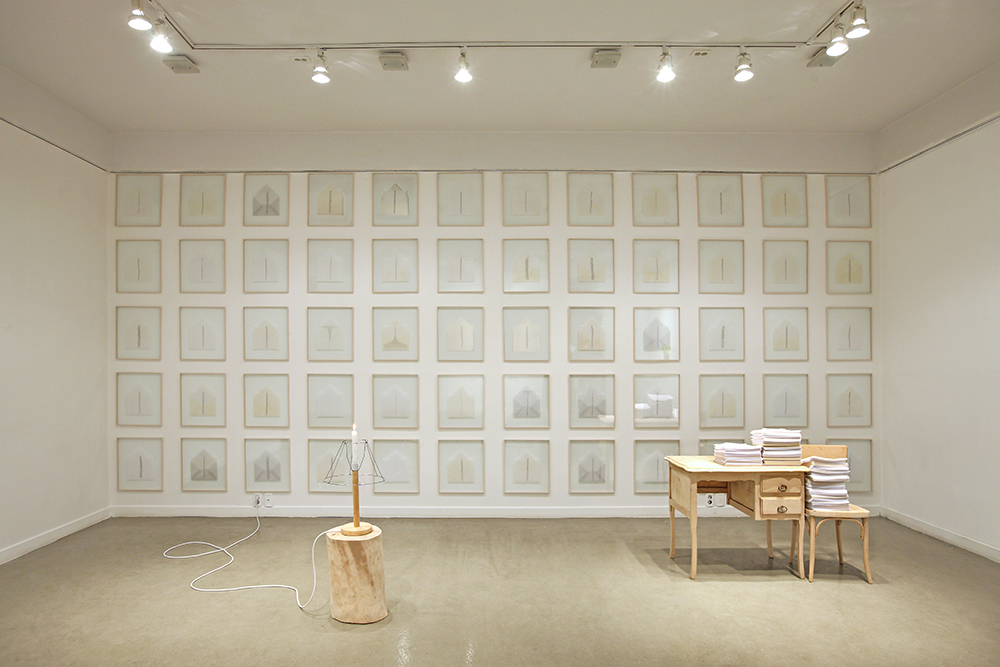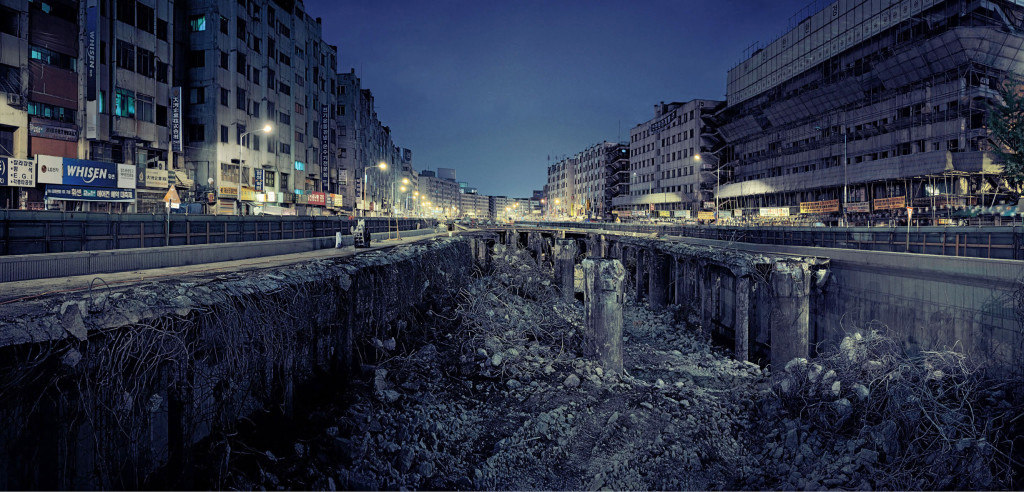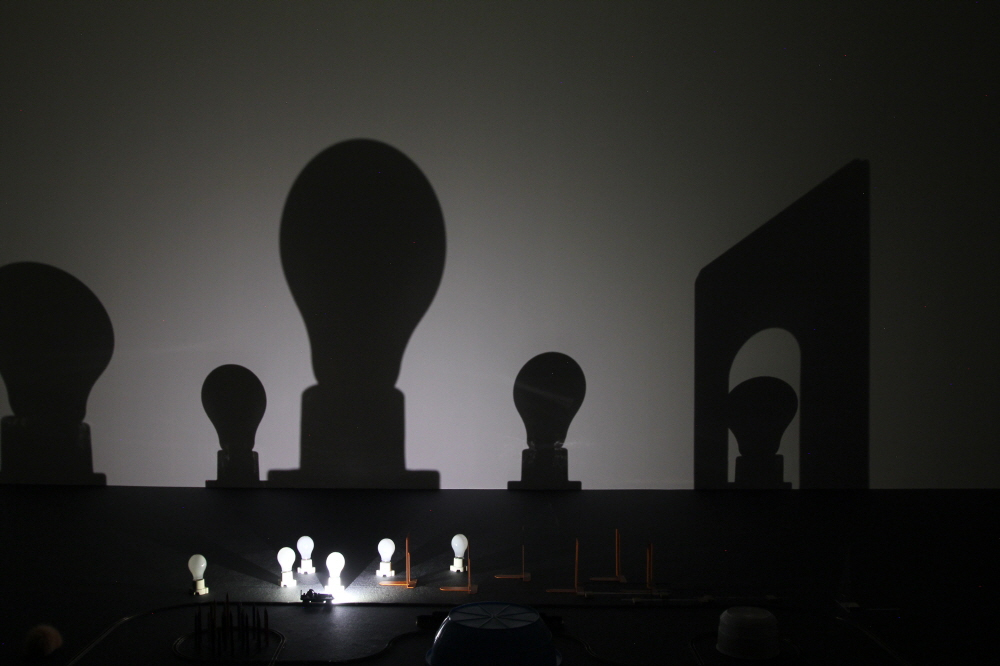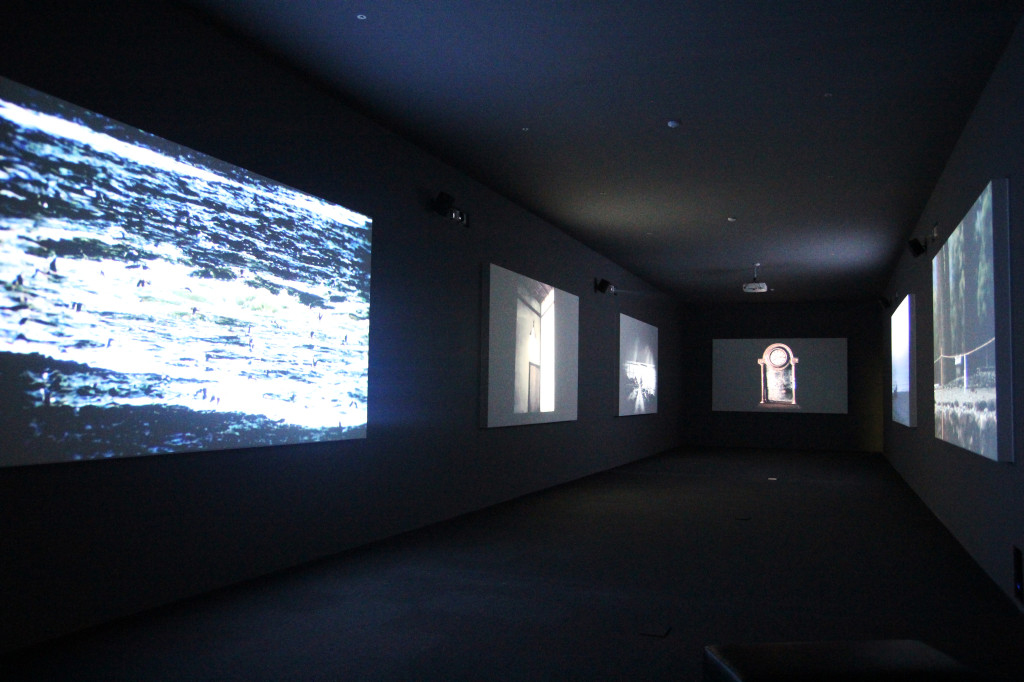What is art?
Is it the moon?
or
the fingertip, which points to this moon? – Nam June Paik-
The motif in is Nam June Paik’s notion regarding the presence of time, art and nature, which is revealed by one of his famous works, Moon is the Oldest TV. Visualizing changes of the moon, Nam June Paik presented time in space and depicted the pre-electronics life when people imagined the mystery of the moon. As the moon presents the time through changing its shape, artists invited to this exhibition present artworks related time variations. Artworks articulate changing time in harmony with the cycle of the moon, the beauty of shadow enfolding the moonlight, harmonious life between people and nature while repeatedly being filled and emptied.
Nam June Paik, Kyuchul Ahn, Sekwon Ahn, Sohee Cho, Ryota Kuwakubo, David Claerbout and Hiraki Sawa participate in this exhibition. Presented artworks suggest the speed of time, which slowly changes or sometimes seems to be stopped, through various mediums: videos; installations recording individual’s activities as well as process; an animation showing virtual time; and photographs documenting changes of time. The exhibition is to contemplate people’s life where the fastest speed rate in history is taking place and to make audience feel rest, meditate, and reason through artistic experience. intends to turn routine everyday ‘moments’ into ‘poetic’ moments by suggesting time layers, an instant moment seeming as forever.

This work began with a picture David Claerbout found on the internet. Inspired by the picture of oil workers who seek shelter from rain under a bridge, Claerbout created a 3-D animation. He used images taken at 25 different angles to transform the still instant into an animation. That ‘single moment’ of workers is meticulously dissected and then linked together, and becomes an eternity in the end. Idle ‘boredom’ caused by the tedious ‘waiting’ of workers who are trapped in rain reveals the aesthetics of time. This brings up complicated thoughts about multi-national companies, the poverty in Africa, and a camera observing others. Also, it makes viewers ponder on virtual time created by virtual images which are more realistic than the real ones.

Claerbout began to prepare this work in 1996 when he came across a piece of relaxation music composed by a French composer, Éric Breton, in the 1980s. The idea was to create an animation that makes people relaxed, calm and relieved, just like the music did. Travel, which took long time to be completed, starts with a bench in a park. The camera slowly moves into a forest and lets audience encounter a simple trail, dark and deep forest where bracken grows, a valley where crystal water flows, a well-shaped forest, and a wild jungle. All images in this work are a computer-generated virtual landscape made by Claerbout for three years. Images of the nature well-matched with music and the smooth movement of the camera offer viewers moments to take a rest.




Kyuchul Ahn’s installations display the simple truth that daily moments, filled and emptied while accumulated, are actually life. How to Draw the Moon is an installation that reflects lights of the exhibition area with mirrors and gathers them onto a dark wall, as if a child plays with a magnifying glass to make a bright dot appear. Sky Bicycle is a unique bicycle carrying a painting of sky. These two artworks show that Ahn dreams of the harmony of nature and mankind. Five Rainbows, consisting of five compasses hung on white plywood, is completed by audience’s participation. Viewers may secure a pen to a compass and draw their own rainbows, and then the white plywood would be filled with five rainbows made of numerous lines. Small actions add up to different results, giving birth to an artwork. Audience can see a blue phrase on the lawn outside the exhibition hall, seen through windows. The phrase is easily recognized on the yellowish lawn, however the distinct blue letters will gradually disappear when spring comes and grass grows. Such Ahn’s works never stay in a fixed form, and slowly change the exhibition area as time goes by, being a record of time.

Moon is the Oldest TV shows Nam June Paik’s ideas about the nature’s time represented by the moon’s rotation, human’s life along with it, and myth and art. This work was first exhibited at Galeria Bonino in 1965. At that time he added magnets to the cathode tubes of TV sets to create different shapes of the moon. After the cathode ray tube televisions were discontinued, he took pictures of round objects and put them on television screens. This exhibition will display its version of the year 2000 which consists of 13 television sets: 12 television sets showing 12 video footages from full moon to new moon and one television set playing a video produced in 1997 inspired by the previous version of this work. Paik thought about a Korean folkloric fairy tale to imagine that a rabbit is pounding rice in a mortar with a pestle on the moon. He associated this moon created by imagination with a television which could be interpreted as another moon generated by the modern technology. This work visualizes the passage of time through the lunar cycle and depicts the pre-electronics life when people imagined the mystery of the moon.
The Unscientific Opus of Burning Candle Ⅱ, 2013, Installation


Sohee Cho records and collects her activities and outputs every day. To create Letters, she chooses a word per day that captures her mind, and types the particular word repeatedly on gauze, thin cotton and tracing paper. The Unscientific Opus of Burning Candle Ⅱ is of one candle a day that lightens up the exhibition area. Around the candlestick lightening up, there are candles that will be used during the exhibition period. As time goes by, the number of candles will decrease to show the presence of time. Cho reorganized a space by making stitches with threads, which is her another work …where…. Different spaces are connected and the gaps among them are filled through knitting. There is a place for audience to meditate amid this work. It leads us to see how beautiful Cho’s daily activities and their results are. She embroiders a space with objects that are fragile and malleable, and focuses on flexible features of items that do not stick to particular shapes. These objects are the evidence of the artist’s life, since they are the outcome of her small actions and time.





Sekwon Ahn is an artist and an observer who translates waiting itself into a work of art. He creates his works by taking pictures of a particular place from a fixed point at a fixed angle for years to show changing images of time. The hillside town of Weolgok-dong used to form a dazzling and beautiful light composition, but a redevelopment project has taken lights away from the area and changed it into a dense grey forest of buildings. Amid the nightscape that hides the hurt and pain of cities, audience would discover traces of disappearance and appearance, and their repetitions over time. Ahn suggests a contemplative view on an urban scene that would disappear soon through his Cheonggye Stream Project. He continuously shot pictures of the Cheonggye stream restoration site, like a guard who quietly observes the city. He paradoxically emphasizes the distress of urban development, as he depicts the construction site, by turning a ruined area into the beautiful light scenery.

Lights of the train running on a mini-rail illuminate ordinary objects such as a basket, spool, set square, shower scrubber and light bulb. Shadows of these objects appear and disappear on the wall. The black-and-white urban landscape generated by the moving train’s light reminds audience of traces of the night, the mystical moon light and its shadow, which have existed from the beginning of the world. LOST #9 resembles the dreamlike and poetic world of a shadow play, and audience would join a new travel along with the time assigned to the machine. The title is the acronym of ‘Light’, ‘Object’, ‘Space’ and ‘Time’, and indicates the artist’s identity who is Japan’s post-bubble economy generation. This generation calls itself ‘a lost generation’. His artworks are simple and ordinary rather than being fancy and gigantic media art that uses high-technologies, and intend to make people recall their memories and indulge in reminiscence. Constantly changing shadows are interpreted and understood differently by individual viewers, because they associate these shadows with their own thoughts. Their memories are then construed from a new perspective.

Hako is a six-channel video installation playing six videos, each of which has a different title, at the same time. Included six videos are: Fragment, a video of a clock, which was filmed for twelve minutes without any editing, is screened in real time and suggests the flow of time; The Birds and the Sea, a video showing a flock of birds flying over the beautiful sea; Moss, a video of sunshine lighting up a well-shaded forest; Talking to the Wall, a video of a house, with a door having a ocean view, which was shaded by the moon over the window; For a Moment, a video showing a lonely seashore view with a big wheel on; Kaerimich, a video of a power plant, which was gradually closed up. The screens that fill the dark exhibition area and the quiet sound make audience feel the noble and romantic beauty of the overwhelming nature and experience a moment of meditation and contemplation. All of these six videos are of different scenes, but audience may watch them at one spot and see them overlapping each other and disappearing like waves.















